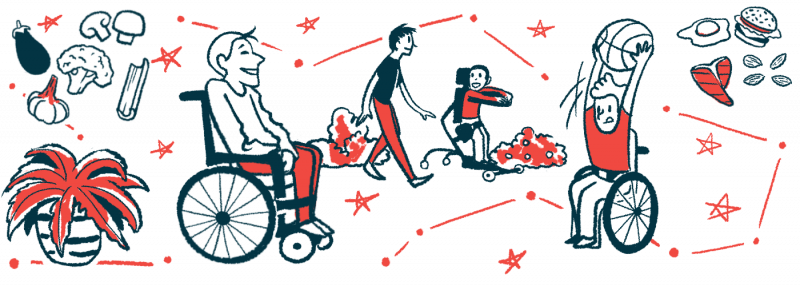Spinraza Most Effective in Younger Type 1 Children: Real-world Study

In a real-world study involving more than 40 Swiss patients with spinal muscular atrophy (SMA), Spinraza (nusinersen) was found to effectively improve motor function — particularly among younger children with SMA type 1.
Older treated patients gained or stabilized their motor function, but infections prompted the need for ventilation and feeding support in SMA type 1 infants.
“The therapeutic effect was most striking in type 1 patients who were treated before the age of 18 months,” the researchers wrote. “However, the older patients with longer disease duration and less severe [symptoms] also showed some positive effects on motor function.”
The team noted that assessing language development during Spinraza treatment is needed for younger patients.
The study, “Evaluation of real-life outcome data of patients with spinal muscular atrophy treated with nusinersen in Switzerland,” was published in the journal Neuromuscular Disorders.
Spinraza, marketed by Biogen, is approved to treat children and adults with SMA types 1, 2, or 3, the most common forms of SMA classified by disease onset and severity of symptoms. It is available in more than 50 countries, including across the EU.
The medicine is designed to increase the levels of the SMN protein, which is essential for the nerve cells that control movement, or motor neurons. An SMN deficiency leads to motor neuron death, resulting in the progressive muscle weakness and atrophy that marks SMA.
Clinical trials supporting Spinraza’s approval focused on children with SMA types 1 and 2. However, little is known about the treatment outcomes of older patients or those with milder disease.
There also are little data on the therapy’s impact on the need for ventilation or tube feeding, or for language development in children with SMA type 1.
Now, researchers based at the University of Bern, in Switzerland, examined real-life clinical data to assess Spinraza’s effect on motor function development and other outcomes. The study involved 44 patients, ranging in age from newborn to 44, with SMA types 1–3.
Participants were assessed at the start of treatment, after two months, then every four months up to 42 months (3.5 years). The researchers used a variety of standardized motor function tests, as well as 13 different qualitative motor function tests. These qualitative tests included walking with assistance, rolling onto one side, holding the head up without support, and raising hands to the mouth in a sitting position.
Among the participants, 11 had SMA type 1; of these, six were younger than 18 months old when treatment began, and five were between about 5 and 16 years of age.
Before Spinraza, one patient could roll onto one side, and three were able to raise their hands to their mouths. Eight (73%) acquired one to seven qualitatively assessed motor abilities during treatment.
The highest motor ability achieved in three children was standing with assistance. The six children first treated before age 18 months acquired the most motor skills.
All 11 SMA type 1 patients improved when assessed by the Children’s Hospital of Philadelphia Infant Test of Neuromuscular Disorders, known as CHOP–INTEND, with those treated before 18 months improving the most. Accordingly, there was a correlation between younger age and shortest disease duration when treatment began, and the highest degree of motor enhancement with Spinraza treatment as determined by CHOP–INTEND.
In the group of 21 SMA type 2 patients — whose ages at treatment initiation ranged from 1 to 31 years — most could hold their head up, sit without support, raise hands to mouth, and use their hands. However, none could walk.
During treatment, eight developed one to five motor abilities, with five individuals gaining the ability to stand with assistance. Two of the patients could walk with help, and one without assistance, following Spinraza therapy. One participant lost two abilities during treatment.
Revised Upper Limb Module scores were reported for 12 of these patients, with five reaching a higher score — indicating improvement — than before treatment, and five showing lower scores.
A total of 16 patients in this group had available scores on the Hammersmith Functional Motor Scale Expanded (HFMSE). Five showed improvements, four reported worse scores, and the remaining seven maintained their scores. Age, when treatment began, did not correlate with motor improvement.
Among 19 SMA type 2 patients with CHOP-INTEND assessments, 12 showed improvement, usually after two to six months of treatment.
Before Spinraza, all 12 SMA type 3 patients, who ranged in age from 4 to about 45 years, could sit without support. Meanwhile, eight of these individuals could stand, and seven were able to walk. During treatment, three participants acquired two to four motor abilities, and one lost a motor ability. Three gained the ability to climb stairs, and two of those individuals were able to walk 10 meters (32 feet) unaided.
Eight of 11 patients achieved higher total scores with HFMSE, while three had lower scores. After treatment, all five patients walked farther in six minutes, as assessed by the 6 Minute Walk Test (6MWT), a standard assessment of walking ability. Researchers noted that a younger age at treatment start correlated with a longer walking distance.
There were 16 participants ranging in age from about 14 to 45 when treatment began — including two with SMA type 1, four with type 2, and 10 with type 3. Two gained at least one motor ability during treatment, while one lost one ability. Among these patients, 14 achieved at least one higher score in the various motor assessments, namely CHOP-INTEND, RULM, HFSME, or 6MWT.
None of the six type 1 patients who started Spinraza before age 18 months required non-invasive ventilation (NIV) or tube feeding at treatment initiation. However, between eight and 30 months (2.5 years) of treatment, four needed tube feeding. Three of these four also started NIV at the same time. In all cases, NIV or tube feeding became necessary during or after a lung infection.
There was no correlation between changes in motor function (CHOP-INTEND) and the need for NIV or tube feeding in this group.
The team assessed language development in six of those who began treatment before 18 months. Three had age-appropriate language development, while three showed speech delays. Again, no relationship was found between language development and the need for NIV or tube feeding.
Overall, six patients had side effects, such as headache and pain, caused by the lower spinal puncture of Spinraza administration. Beyond these side effects, 15 individuals a (34%) had at least one mild and transient adverse event, including protein in the urine, high or low platelet count, a blood clotting disorder, and changes in heart measures.
“[Spinraza] is an effective treatment of SMA in children and adults, especially in young children with SMA type 1,” the authors concluded. “Our data confirm that early initiation of treatment positively affects motor outcome in SMA type 1. Patients with SMA type 2 and 3 also gained or stabilised motor function in our [group].”
The post Spinraza Most Effective in Younger Type 1 Children: Real-world Study appeared first on SMA News Today.



